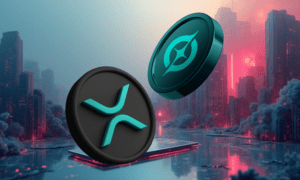If you’re at that crossroads, trying to figure out which web design agency won’t waste your time or budget, I’ve got you. I’ve worked with the good, the bad, and the ugly in this industry, and can tell you how to avoid the pitfalls and land a partner who will actually help your business grow. Let’s get straight into the nitty-gritty.
Step 1: Get Clear on What You Actually Need
Before you even open a new browser tab to start the search, think about the problem you’re solving. You don’t need a website just for the sake of having one. What exactly do you want this site to do?
In my case, I thought I needed a redesign, but what I actually needed was better lead generation. The site looked fine, but nobody was converting. Once I realized that, my priorities shifted. I needed an agency that understood conversion optimization.
Your goals will determine who’s right for you. A product-heavy e-commerce site has very different requirements than a law firm or a SaaS startup. Be specific about what success looks like. Otherwise, you’ll end up with a portfolio piece for them and a dud for you.
Step 2: Don’t Let Pretty Pixels Distract You
It’s so easy to get distracted by the beauty contest. Sleek hero images, animated SVGs, tasteful color palettes; I get the appeal. But if the site doesn’t perform, it’s just expensive digital art.
I made the mistake once of falling in love with an agency’s visuals. Their homepage could’ve been framed and hung in a gallery. But when my site launched, the page load times were awful, the SEO was non-existent, and you couldn’t find the CTA buttons with a map and a compass.
A beautiful site that doesn’t convert isn’t a win, so look beyond the aesthetics.
Step 3: A Good Process Beats a Good Pitch
A great web design agency will talk more about how they work than what they’ve made.
Ask about their process. Do they have a clear roadmap for discovery, strategy, design, development, testing, and launch? Do they bake in feedback rounds at the right stages? Can they walk you through how they handled a past project from kickoff to delivery?
One agency I worked with gave me a day-by-day timeline of the build. They broke down every sprint, identified who was responsible for what, and gave me a heads-up on where bottlenecks could happen. I knew I’d found professionals.
Contrast that with another agency that said, “Don’t worry, we’ll take care of everything,” and then didn’t respond to emails for two weeks.
Step 4: Focus on the UX
Everyone wants a five-star website on a one-star budget, and on the face of it, with the market being as wild as it is, there may actually be a chance for you to get that. You’ll find agencies quoting $3,000 and others quoting $30,000 for what seems like the same thing.
But think about the long-term value. Will you get a return on what you’re investing?
According to Forrester Research, every $1 invested in user experience returns up to $100. That’s a compelling case for prioritizing solid, user-centric design. So instead of trying to lowball, ask what kind of ROI the agency aims to deliver.
Step 5: Spot the Red Flags Before They Burn You
Let’s just say there are a few patterns I now run from on sight.
If an agency is vague about pricing or dodges your questions about ownership rights, be wary. If their pitch deck is just buzzwords like “omnichannel synergy” or “next-gen storytelling,” ask them to translate into plain English.
It’s also a bad sign if they don’t ask you a lot of questions. The best agencies interview you right back. They’re trying to figure out if you’re a fit for them, too. That’s a good thing.
Step 6: Don’t Underestimate the Cultural Fit
This sounds soft, but it matters more than you think. You’ll be working with these people for weeks, sometimes months. If communication is clunky, if meetings are awkward, or if you find yourself hesitating to give feedback, that’s a red flag.
The best fit I ever found was a smaller agency that just got me. Our conversations were fluid, they weren’t afraid to push back on bad ideas (bless them), and they always had receipts when explaining their recommendations. It felt like working with an internal team.
Step 7: Stay Informed About Industry Trends
You don’t need to be a designer yourself, but you should at least understand what’s considered modern, accessible, and conversion-friendly.
Staying updated with the latest website design trends can also inform your decision when selecting an agency. If they don’t seem aware of current best practices or are pushing ideas that feel outdated or overly gimmicky, you’ve got your answer.
Step 8: Look for a Long-Term Partner
In the end, this shouldn’t be just about launching a pretty website, but building a conversion engine and brand touchpoint. Find people who care about results, not just aesthetics.
Take your time, ask tough questions, and read the fine print. And when you find that rare mix of creativity, strategy, and execution, stick with them. A great agency is one of the best investments you can make for your business.



































